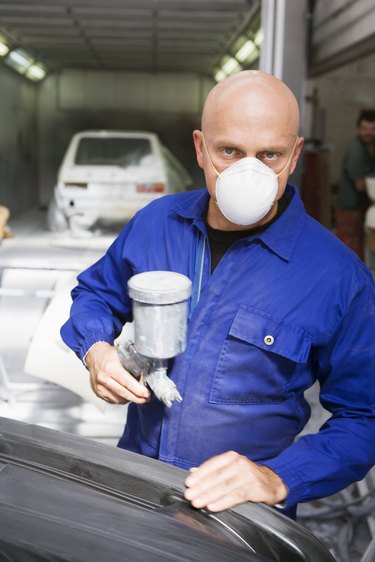Things You'll Need
Mask
Primer
Spray paint
Fan

Spray paint may be somewhat synonymous with vandalism and teenage rebellion, but such stereotypes become insignificant compared to the real uses for spray paint. From small art projects to automobiles, this small can can be used to create a terrific visual effect with a minimum of fuss. However, one danger is that you may be left with a sticky finish, meaning issues like high humidity and over-application should always be considered.
Step 1
Apply a coat of primer to the surface you are planning to spray paint. This stops the spray paint interacting with any substance that has previously been used on this surface. Such interactions can often result in a sticky finish.
Video of the Day
Step 2
Shake the can of spray paint vigorously before application. This should ensure a smooth, even application of the spray paint.
Step 3
Allow the primer from step one to dry and spray the paint evenly over the surface. Ensure that you give each area the same attention, and be sure not to over-apply the spray paint. Too much paint -- thus not being able to dry properly -- is often the cause of a sticky finish.
Step 4
Allow the painted surface to dry outside, or at least with a fan nearby to allow fresh, cool air to help the drying process.
Tip
Try not to carry out the process on a humid day; it affects the paint's ability to dry properly and can be another cause of a sticky finish.
Video of the Day